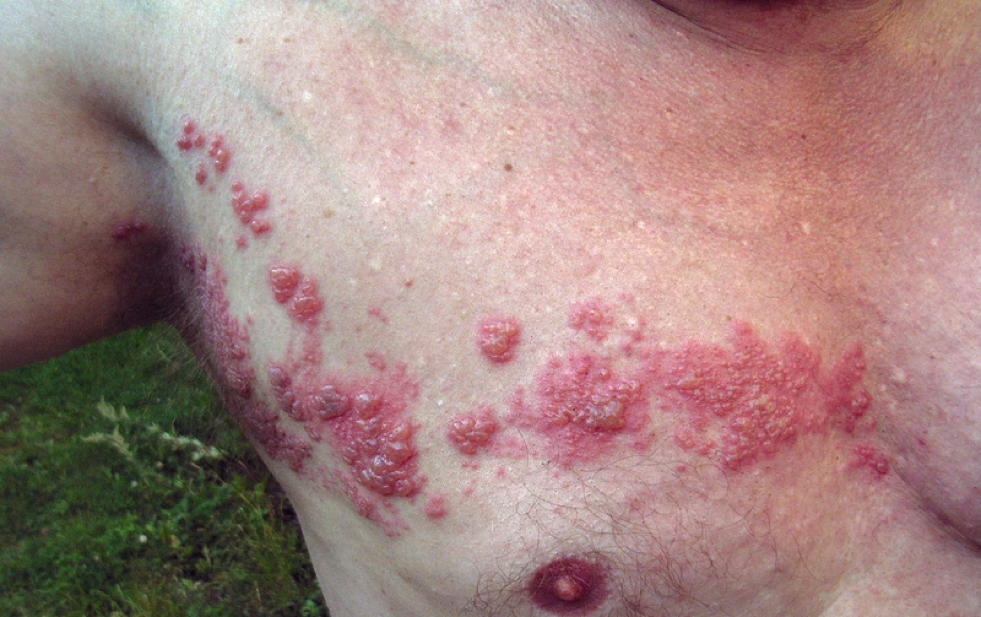Table of Contents
Overview – Herpes Zoster
Herpes zoster, also known as shingles, is a reactivation of latent varicella-zoster virus (VZV), which remains dormant in dorsal root ganglia following a primary varicella (chickenpox) infection. It presents as a painful, unilateral vesicular rash in a dermatomal distribution, typically in older adults or immunocompromised individuals. Early diagnosis and antiviral treatment are essential to reduce complications such as postherpetic neuralgia.
Definition
Herpes zoster (shingles) is a reactivation of latent VZV infection, resulting in a painful, vesicular rash affecting one or more dermatomes.
Aetiology
- Caused by reactivation of Varicella-Zoster Virus (VZV)
- Occurs when immunity wanes, especially:
- In older adults
- In immunocompromised states (e.g. HIV, chemotherapy)
Pathophysiology
- Following primary varicella infection, VZV enters a latent phase in the dorsal root ganglia
- Reactivation → viral replication and travel down peripheral sensory nerves
- Inflammation of the affected nerve and skin causes pain and dermatomal rash
- Incubation period: ~2 weeks from reactivation
Clinical Features
- Painful, unilateral vesicular rash in a dermatomal distribution (often thoracic)
- Prodromal symptoms:
- Burning, tingling, or shooting pain
- Fever, malaise, headache
- Vesicles evolve into pustules and crust over within 7–10 days
- Lymphadenopathy in the regional drainage area
- Possible complications:
- Nerve palsies (e.g. facial nerve → Ramsay Hunt syndrome)
- Postherpetic neuralgia (persistent pain >3 months)

Diagnosis
- Usually a clinical diagnosis based on rash and pain
- Confirmatory tests if needed:
- VZV-specific serology (IgM or IgG)
- Polymerase chain reaction (PCR) of vesicle fluid
Transmission
- Herpes zoster is infectious, but less so than chickenpox
- Transmission:
- Through direct contact with vesicle fluid
- Can cause chickenpox (not shingles) in non-immune individuals
Management
- Antiviral therapy (ideally within 72 hours of rash onset):
- Oral aciclovir, valaciclovir, or famciclovir
- Analgesia:
- NSAIDs, paracetamol
- Neuropathic pain agents if postherpetic neuralgia develops
- Supportive care:
- Rest, hydration
- Cool compresses on affected skin
- Consider hospital admission for:
- Immunocompromised patients
- Disseminated zoster
- Ophthalmic or facial involvement
Complications
- Postherpetic neuralgia
- Secondary bacterial infection of skin lesions
- Ocular involvement (Herpes zoster ophthalmicus)
- Cranial nerve involvement (e.g. Ramsay Hunt syndrome)
- Meningoencephalitis or vasculitis (rare)
Summary – Herpes Zoster
Herpes zoster, or shingles, is the result of varicella-zoster virus reactivation, causing a painful, dermatomal vesicular rash. Prompt antiviral therapy can reduce symptom severity and prevent complications such as postherpetic neuralgia. For broader dermatological context, see our Skin & Dermatology Overview page.